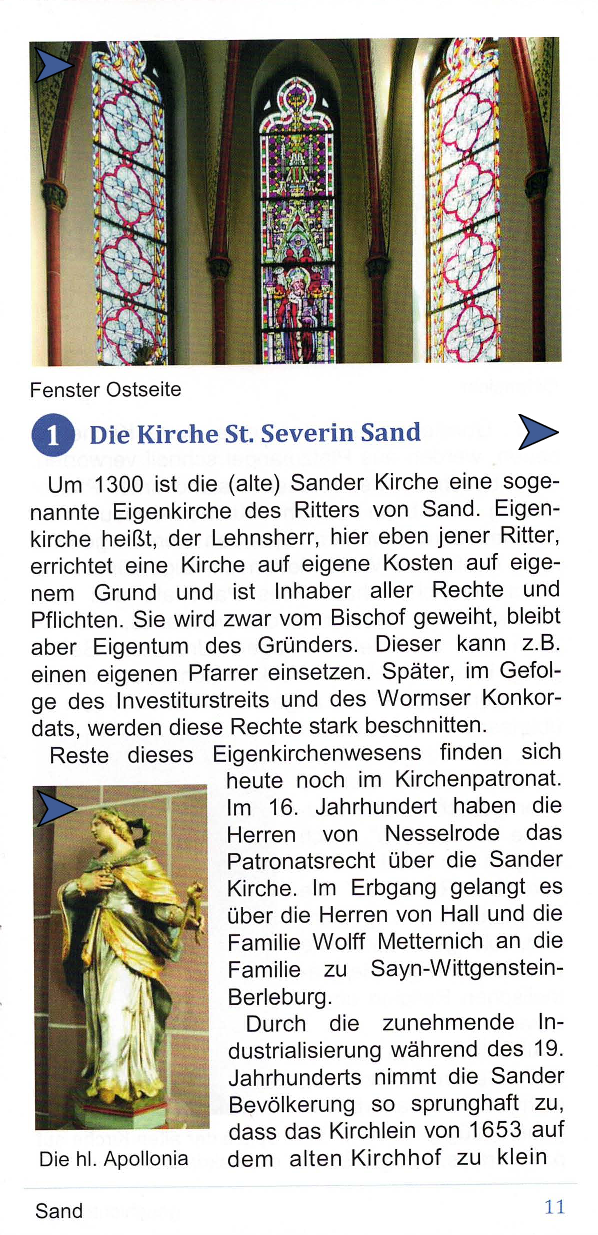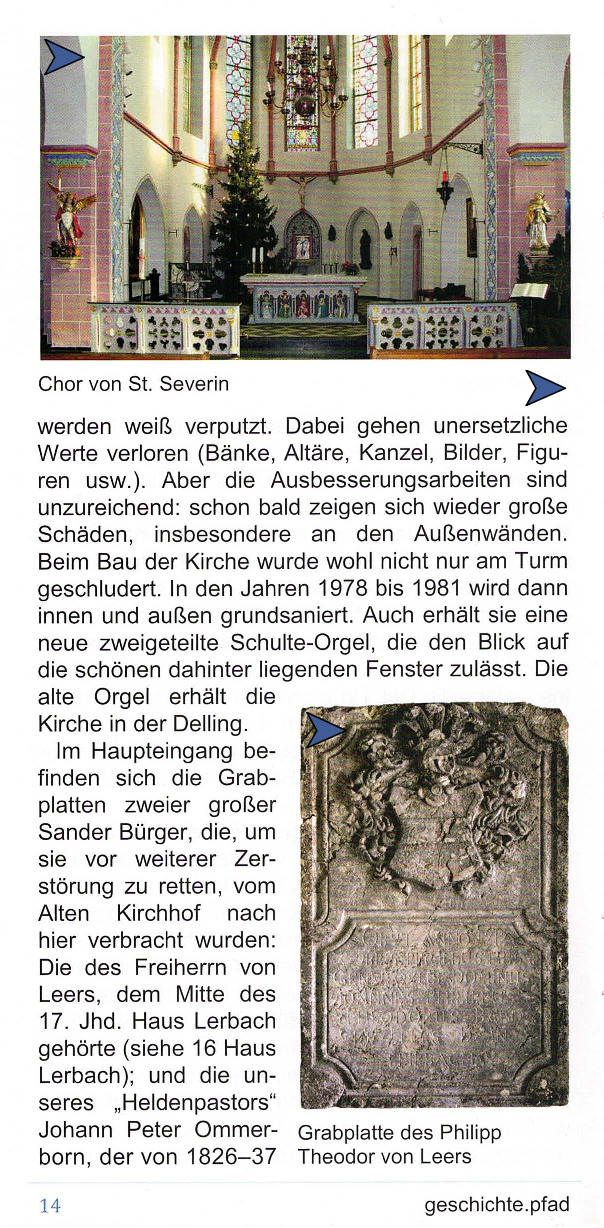geschichte.pfad
Historischer Wanderweg Sand
von Manfred Dasbach und Udo Harler
Kapitel 1
Die Kirche St. Severin Sand
Seiten 11 - 15
Download der kompletten Broschüre
"geschichte.pfad Historischer Wanderweg Sand"
mit englischen Texten

|
Around 1300 the (former) church was a so-called independent church belonging to the Knight of Sand. The vassal, in this case the knight, had a church built at his expense and was the owner of all rights and duties. The church was consecrated by the bishop but remained the property of the founder. He had the right to choose his own priest. In later years these rights were to be substantially cut back. In the wake of the rapidly increasing industrialization the number of the villagers grew so rapidly that the small church in the old church yard became too small. |

|
|

|
|

|
|

nach oben
| Übersichtskarte | nächstes Kapitel |
Mit freundlicher Unterstützung durch
